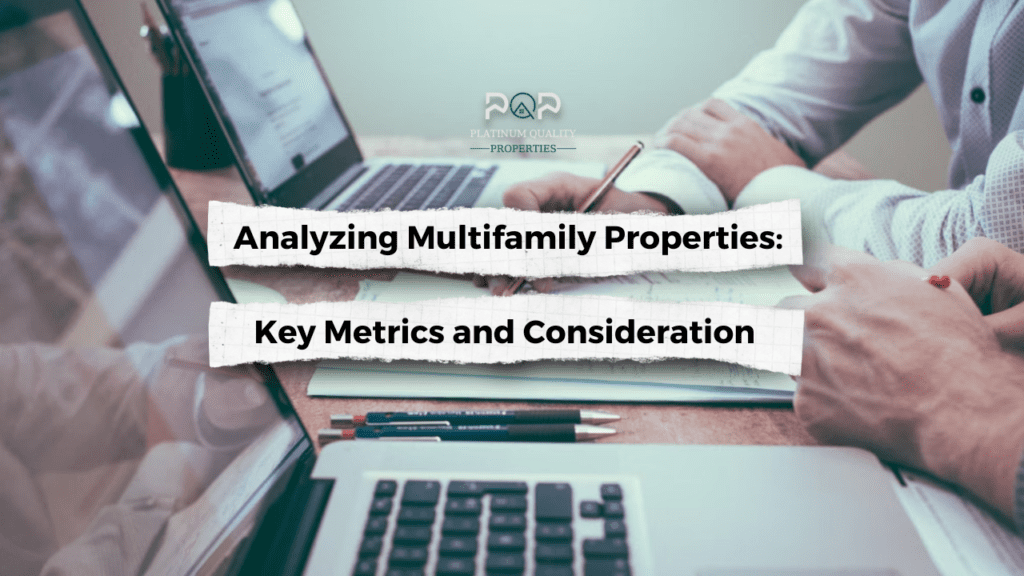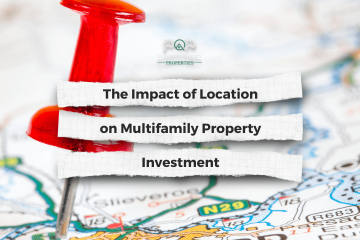When it comes to investing in real estate, there are numerous strategies that you can utilize. But one of the most popular – and potentially most profitable – is investing in multifamily properties. Multifamily properties are those that contain multiple dwelling units, such as duplexes up to apartment complexes.
There are a lot of reasons why multifamily properties can be such a great investment. For one, they offer the potential for high returns. And because you’re essentially spreading your risk across multiple tenants, they can also be relatively low-risk. But before you jump into investing in a multifamily property, there are a few key things that you need to consider.
Investing in multifamily properties is an attractive option for real estate investors; however, it can be a daunting task. Knowing the key metrics and considerations to look for during the analysis process is critical to making informed and profitable investment decisions. Whether you are a seasoned real estate investor or a novice looking to break into investing market, this blog post will provide invaluable information to ensure that you make well-informed decisions when analyzing multifamily properties.
This blog will provide a guide to analyzing multifamily properties, covering key metrics and considerations that every investor should be aware of before investing.
Location
The location of a multifamily property plays a significant role in its value and potential for returns. A property located in a desirable neighborhood, close to amenities such as shopping centers, public transportation, and good schools, will likely command higher rents and attract a higher-quality tenant. Investors should consider the proximity to major job centers and the overall economic health of the area to ensure a stable tenant base.
Rental Income
One of the most important metrics to consider when analyzing multifamily properties is rental income. The income generated by the property should be sufficient to cover expenses such as mortgage payments, property taxes, maintenance costs, and vacancy rates, while still providing a positive cash flow. Investors should evaluate the rent roll, which outlines the monthly rent amounts for each unit, and compare it to the market rental rates in the area to ensure that the rents are in line with the market.
Expenses
In addition to rental income, investors should also consider the expenses associated with the property. These expenses include property taxes, insurance, maintenance costs, and management fees. Investors should calculate the operating expenses as a percentage of the gross rental income to determine the property’s overall operating expenses. A property with high expenses may have a negative impact on the overall returns.
Occupancy Rates
Another key metric to consider is the occupancy rate. A high occupancy rate indicates strong demand for the property, and a low occupancy rate may suggest issues such as poor management or an undesirable location. Investors should evaluate historical occupancy rates and compare them to the market vacancy rates to determine the property’s overall performance.
Capitalization Rate
The capitalization rate, or cap rate, is a metric that indicates the rate of return an investor can expect to receive on a property. The cap rate is calculated by dividing the net operating income by the property’s value. A higher cap rate indicates a higher potential return on investment, and a lower cap rate suggests a lower potential return.
Debt Service Coverage Ratio
The debt service coverage ratio, or DSCR, is a metric that measures the property’s ability to generate sufficient cash flow to cover debt service payments. A DSCR of 1 or higher suggests that the property is generating enough cash flow to cover the debt payments, while a DSCR below 1 suggests that the property may have difficulty covering the debt service.
Condition of the Property
The condition of the property is an essential consideration when analyzing multifamily properties. Investors should evaluate the age of the property, the condition of the building’s structure, and the mechanical systems such as heating, ventilation, and air conditioning. Investors should also consider any necessary repairs or upgrades to the property, such as renovating outdated units or addressing deferred maintenance.
In addition to these key metrics and considerations, investors should also be aware of any legal or regulatory requirements that may apply to the property. For example, some municipalities may have rent control regulations or restrictions on evictions that could impact the property’s profitability.
Moreover, investors should also consider the age of the property and its mechanical systems, including plumbing, electrical, and HVAC systems. These systems may require repairs or upgrades, which can impact the property’s overall profitability.
Overall, analyzing multifamily properties requires a thorough understanding of various metrics and considerations that impact the property’s overall value and potential for returns. Investors should take a comprehensive approach, evaluating not only the property’s rental income, expenses, and occupancy rates but also its location, capitalization rate, DSCR, and condition. By doing so, investors can make informed investment decisions and maximize their returns.
Multifamily properties can be great investments – but only if you know what you’re doing! Before you invest in any multifamily property, make sure you’ve considered all of the important factors, from location to financials. By doing your due diligence upfront, you can help ensure that your investment turns out to be a success!
Looking to invest in multifamily properties but not sure where to start?
PQP LLC can help!
Our team of experienced real estate professionals can guide you through the analysis process and help you make informed investment decisions. Visit pqpllc.com to learn more and schedule a consultation today.
Don’t miss out on the potential for high returns and relatively low-risk investments with multifamily properties – let PQP LLC be your real estate investment partner!




